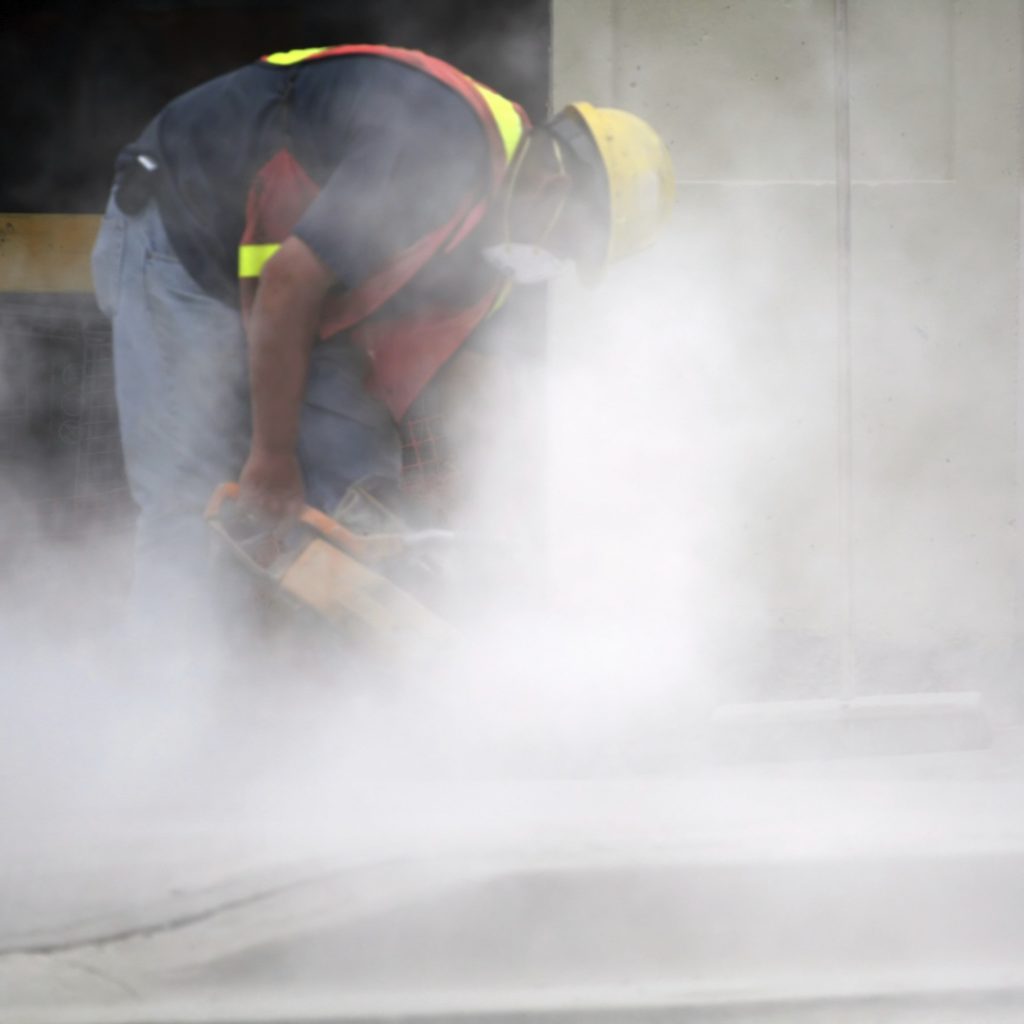News - Construction News
Bureau Veritas asks industry to reduce Silica exposure

With guidelines on managing exposure to hazardous substances at work becoming ever tighter, Bureau Veritas has called on the construction industry to ‘work smarter’ on addressing the risk silica dust poses to employees.
Silica is a material found in most types of natural stone, clay, bricks and sand, and activities such as grinding, crushing and mixing break down the silica and generate a fine dust like Respirable Crystalline Silica (RCS). Regarded as one of the most significant causes of occupational lung disease worldwide, exposure to RCS causes Chronic Obstructive Pulmonary Disease (COPD) and in the UK alone is estimated to result in up to 1,000 deaths each year through silicosis and or lung cancer.
According to global certification expert Bureau Veritas, in light of recent industry campaigns to raise awareness of this hidden killer, it has never been more important for construction firms to ensure they have the right occupational hygiene programme in place.
Gerard Mooney, Principal Consultant in Occupational Hygiene at Bureau Veritas, comments: “For many employees working in factories and construction sites across the UK, there continues to be a significant risk from over exposure to silica dust and in particular respirable crystalline silica (RCS), which can penetrate deep in to the lungs to cause damage and disease. The invisible nature of this dust – much of the Respirable Crystalline Silica (RCS) cannot be detected by the human eye – and long timeline before health effects occur often means control measures are ignored, by which time, unfortunately, it can be too late.”
“Given the danger it clearly presents, it’s time for the construction industry to work smarter on limiting the risks that silica dust and RCS pose to employee health. At the heart of this will be ensuring a robust occupational hygiene strategy is in place for controlling workplace exposure to these harmful substances, which if done correctly not only prevents potential fatalities but by stopping dust from becoming airborne in the first place can reduce non-productive man hours spent cleaning up and reduce the reliance on expensive respiratory protective equipment (RPE).”
With so many factors to consider and a myriad of different regulations to meet, such as Control of Substances Hazardous to Health Regulations 2002 (COSHH) and the Health and Safety at Work Act 1974, construction firms can often struggle to effectively manage the health of employees who perform operations involving stone, rock, concrete and plaster.
Gerard advises: “We would therefore encourage manufacturers to review their existing occupational hygiene programme to ensure it goes beyond simple compliance. A comprehensive review of all potential sources of RCS exposure including substituting where possible for materials with a lower RCS content, implementing a continuous risk reduction program, and having effective Local Exhaust Ventilation systems in place, can certainly go a long way in safeguarding employee wellbeing and will ultimately save lives.”
If you would like to read more articles like this then please click here.
Related Articles
More News
- Construction output decreased in February
23 Apr 24
The estimates show that monthly construction output is expected to have decreased 1.9% in volume
- Falling from height workplace injuries
22 Apr 24
Following the recent tragic news of Gogglebox star, George Gilbey's death is a stark reminder
- SMEs remain unprepared as cyber threats escalate
19 Apr 24
SMEs neglect cyber security, making them easy targets for a wide range of attacks, including






